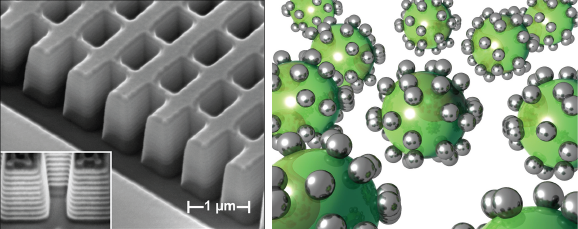The availability of optical materials with user-defined optical properties that would fulfil perfectly the requirements of applications are highly desired in the photonics industry. The lack of such materials limits realization of many optical devices. With the progress in nanofabrication technology we are now confronted with the ability to freely engineer artificial nanostructures down to a few nanometers well below the optical wavelength. Such materials, if designed properly, can exhibit completely new optical properties that are not available by any natural material. The best known examples are materials with a negative index of refraction. By utilizing even strongly localized fields in dielectric and metallic nanostructures the effective material parameters can be nearly arbitrary altered and in that way new optical materials designed. Our group designs, fabricates, and investigates such new optical materials based on plasmonic and dielectric nanostructures for the near-infrared and visible wavelength domain. In combination with newly developed design methodologies, like the recently introduced concepts of Transformation Optics and abrupt topological phase changes, open the possibility to obtain new functionalities for optical elements or even allow the realization of astonishing effects like invisibility (cloaking) or ultrathin optical elements.
Furthermore, many optical applications require small and highly efficient optical light sources. In particular quantum optical and on-chip devices would greatly profit from ultrasmall sources. However, the efficiency of conventional light emitters is in general extremely poor. Our research activities focusses on the improvement of light emitting structures by enhancing the emission efficiency with the help of plasmonic nanoantennas or by utilizing the strong confinement and large radiation enhancement of Surface Plasmon Polaritons to increase the emission only in particular optical modes. For the investigation, we employ nonlinear and time-resolved techniques, which have the potential to provide new inside the emission modification or the mode structure of the design nanoscale system.


